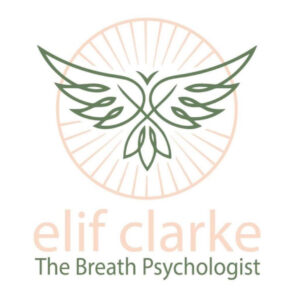
Healing Eating Disorders Through Breathwork: A Journey of Transformation - Case Study
Eating disorders are complex mental health challenges, deeply rooted in emotions, behaviors, and self-perception. These disorders can manifest in different ways, including:
- Bulimia Nervosa: Cycles of overeating followed by purging.
- Anorexia Nervosa: Extreme food restriction and weight loss.
- Binge Eating Disorder: Episodes of uncontrollable overeating without purging.
Common to all forms of eating disorders is a sense of disconnection from the body, often linked to dissociation and self-judgment. People with eating disorders tend to have rigid thinking, a preoccupation with food, and feelings of unworthiness. There’s often a need to control every aspect of life, accompanied by shame, guilt, and fear of judgment. Factors like genetics, family environment, peer pressure, and societal expectations can contribute to the development of these disorders, particularly in young women.
In Transformational Breathwork, we recognize that these emotional and mental patterns are stored not only in the mind but also in the body and the breath. Let’s explore how breathwork, specifically breath analysis and body mapping, can help people heal from eating disorders.
Understanding Breath Patterns and Body Mapping
When we speak of emotions being “in the body,” we refer to the way the body holds tension, trauma, and emotions. This tension is often visible through specific patterns of restricted or shallow breathing. By observing these patterns (breath analysis) and identifying physical sensations and tightness (body mapping), we can pinpoint areas where emotional blockages are stored.
For example:
- Shallow breathing may indicate fear or anxiety.
- Restricted chest breathing may signify a lack of self-compassion or unresolved grief.
- Tightness in the abdomen can reflect suppressed emotions, especially related to social interactions and control.
These insights can lead to a deeper understanding of how someone with an eating disorder may be dissociating from their body and emotions, using food behaviors to manage the overwhelming feelings they are unable to process.
Case Study: Lucy’s Journey with Bulimia and Breathwork
Lucy, 32, had been struggling with bulimia since her teenage years. As a marketing manager in a fast-paced company, she often felt overwhelmed by her emotions, particularly around relationships and social settings. She was highly self-critical, driven by perfectionism, and her self-worth was deeply tied to others’ perceptions of her. Lucy’s bulimia was a way for her to cope with these feelings—binging when emotions became too much, and purging as a way to “cleanse” herself of the emotional overload.
When Lucy began breathwork sessions, a breath analysis revealed significant restrictions in her breath:
- She had shallow breath in her abdomen, indicating a difficulty in being present and grounded in her body.
- There was no breath in her chest, which suggested that her heart was closed off from self-compassion and that she was holding onto self-judgment.
- Her lower abdomen showed no movement, a sign that she felt undeserving of receiving nourishment or care.
Through body mapping, we also discovered tension in her left shoulder and chest, areas associated with self-judgment and protection. These areas were tight and painful, revealing how much Lucy was holding in emotionally. Her neck and jaw were tense, signaling unresolved anger and frustration. Her breathing was primarily happening in her neck, which indicated that her body was in a constant state of fight or flight—trying to control and suppress overwhelming emotions rather than allowing them to flow freely.
Lucy’s eating disorder was her body’s way of coping with this constant state of anxiety and dissociation. She was swinging between feeling hyper-alert (fight or flight) and shutting down completely (freeze). Her bulimic behaviors were tied to her dissociation: binge eating as a way to numb and disconnect from her emotions, and purging as a desperate attempt to rid herself of the emotional turmoil.
The Healing Process: Reconnecting to Breath and Body
After six sessions of breathwork, we started to see profound changes in Lucy:
- Her breathing became fuller, expanding into her lower abdomen and chest, signifying a reconnection to her body and a greater sense of grounding.
- She was able to express emotions that had been buried for years, including anger and frustration, which she had previously turned inward through self-judgment and control.
- Lucy began to cultivate self-compassion, allowing herself to feel worthy of love and care. This was evident in her body as the tension in her chest and shoulders began to release.
Breathwork helped Lucy shift her energy, not just physically and emotionally, but also in her daily life. She became more accepting of herself and less driven by the need to control every aspect of her life. By allowing herself to breathe more freely, she also began to invite more joy and connection into her life, including deciding to leave her high-pressure job and pursue training in Transformational Breath.
The Breath as a Path to Transformation
Breathwork is a powerful tool for healing eating disorders because it addresses the core issue: the disconnection between body, emotions, and self-worth. By working with the breath, we can break through patterns of dissociation, release stored emotions, and reconnect with our innate sense of worthiness.
As Lucy’s journey shows, the breath is more than just a physical act—it is a gateway to emotional freedom, self-acceptance, and personal transformation. Through breathwork, Lucy found not only healing from her eating disorder but also a new path in life, filled with self-compassion and purpose.
Final Thoughts:
The breath is truly magic. It holds the power to heal, transform, and uplift us. Each of us has this gift within, and by working with it, we can free ourselves from the limiting patterns that keep us stuck. Whether you’re dealing with an eating disorder or simply seeking more balance in life, the breath can be your guide.
Let’s breathe into life, together

Recent Comments